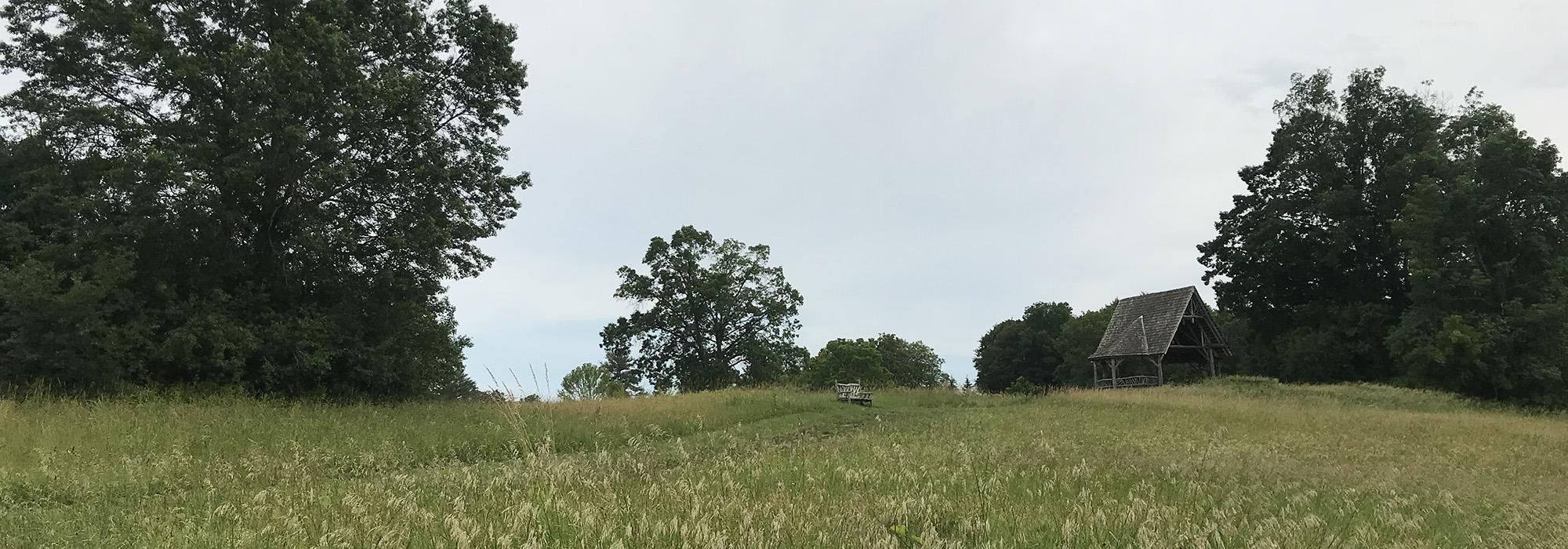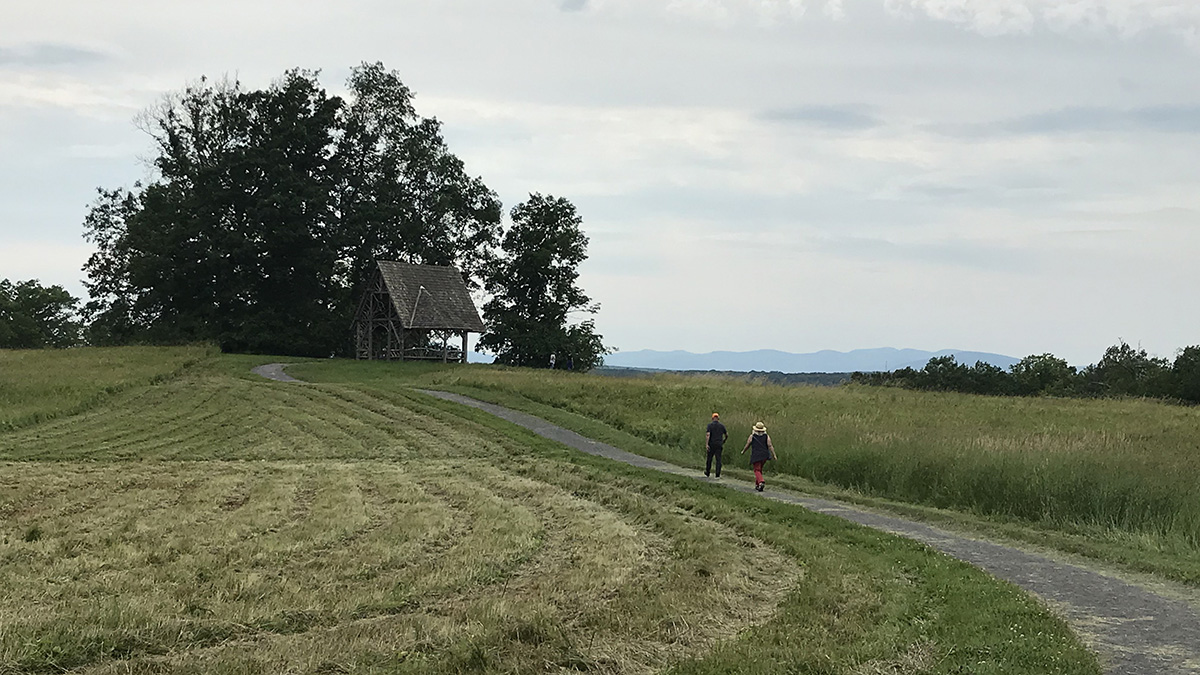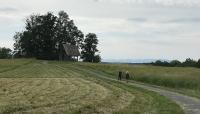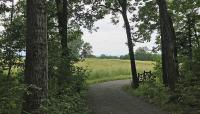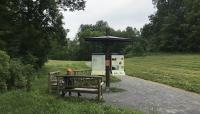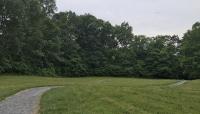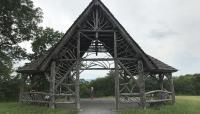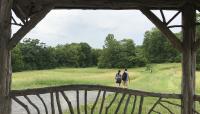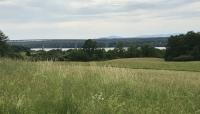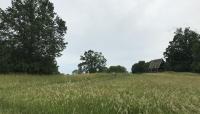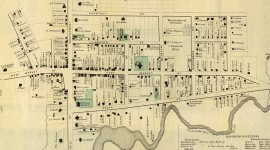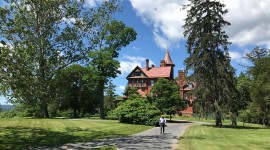Following the acquisition of 120 acres of varied terrain that was once part of the adjacent Rokeby estate, which was designed by Hans Jacob Ehlers in 1849, this park, opened in 1996. Nineteenth century writers, including Washington Irving, visited the estate and are said to have drawn inspiration from the landscape and borrowed views. The park, which is owned and managed by Scenic Hudson, is surrounded by 780 acres protected through conservation easements.
Separated from the river by railroad tracks, the park stretches approximately one mile toward River Road, which forms the eastern edge of the property. From the road, a relatively short, gravel drive leads to a parking area and the beginning of the park’s namesake trail, marked by an informational kiosk and three wooden benches whose rustic design is echoed throughout the park. The curvilinear, crushed stone trail follows undulating topography through a series of room-like spaces, defined by mown meadows bordered by second-growth woodlands. As visitors wend west, they are treated to views of the next, which are often framed by vegetation, including low shrubs and large oaks. Less than half-a-mile from its start, the path moves through a wooded lot, affording a sense of enclosure, and abruptly opens to an expansive, hilly meadow, adorned by a circular, rustic pavilion designed by Optimus Architecture. The structure’s built-in benches provide the opportunity to rest while affording panoramic, framed views. Past the shelter the path forks: one branch progresses west along a ridge, leading to a designated overlook that presents sweeping views of the Kingston-Rhinecliff Bridge, the river, and the Catskill Mountains beyond; the other descends into a wooded ravine and follows a former agricultural road west to a pavilion (also designed by Optimus Architecture) overlooking a wetland along the river’s edge.



